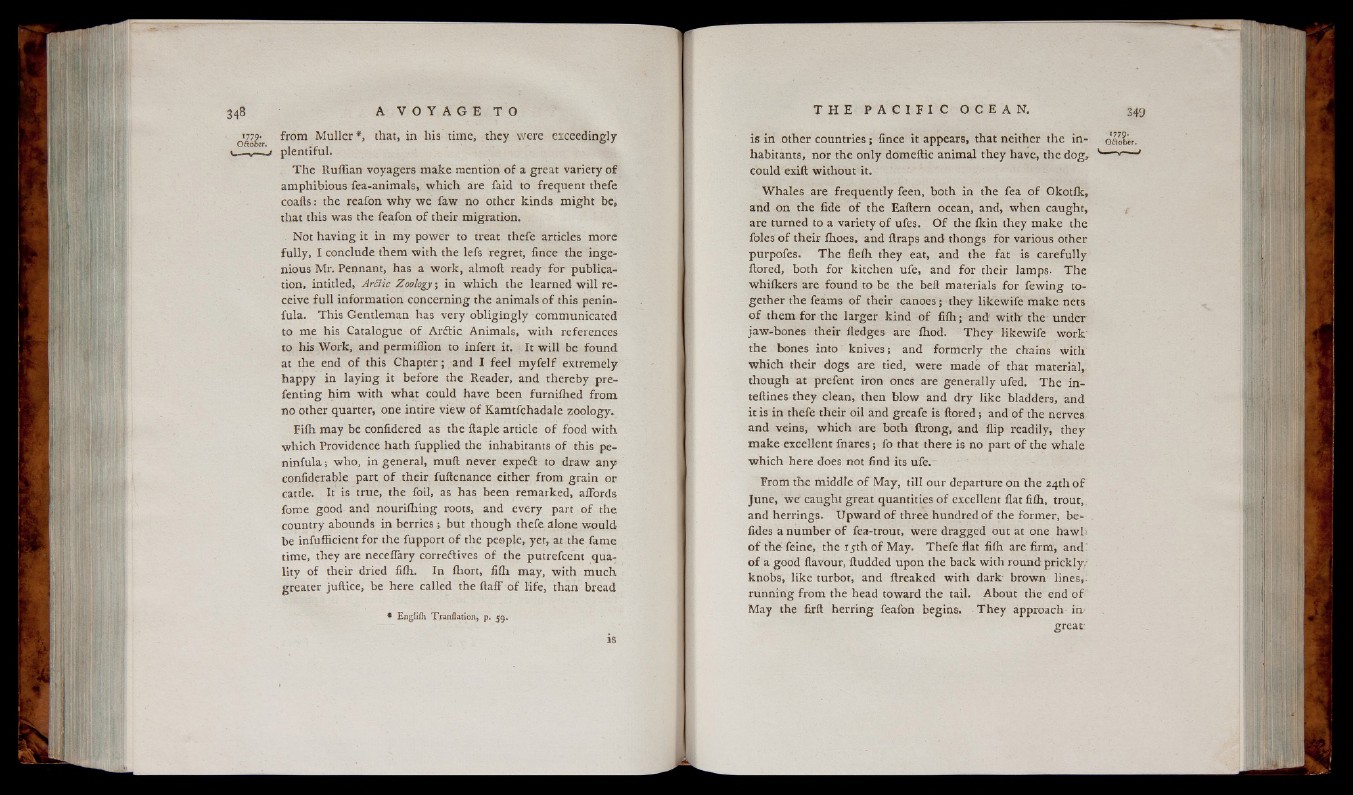
'779- from M u lle r* , that, m his time, they were exceedingly
oaober. p W 1 ° 1
— v— i plentiful.
T h e Ruffian voyagers make mention o f a great variety o f
amphibious fea-animals, w hich are faid to frequent thefe
coafts: the reafon w h y w e faw no other kinds migh t be,
that this was the feafon o f their migration.
Not ha vin g it in m y power to treat thefe articles more
fu lly , I conclude them with the lefs regret, fince the ingenious
Mr. Pennant, has a work, almoft ready fo r publication,
intitled, Arctic Zoology; in w hich the learned w ill receive
fu ll information concerning the animals o f this penin-
fula. This Gentleman has very o b lig in g ly communicated
to me his Catalogue o f ArCtic Animals, with references
to his Work, and permiffion to infert it. It w ill be found
at the end o f this C h ap te r; and I fe e l m y fe lf extremely
happy in la y in g it before the Reader, and thereby pre-
fenting him w ith what could have been furniffied from
no other quarter, one intire view o f Kamtfchadale zoology.
Fiih may be confidered as the ftaple article o f food w ith
which Providence hath fupplied the inhabitants o f this pe-
n in fu la ; who, in general, mud never expeCt to draw any
confiderable part o f their fuftenance either from grain or
cattle. It is true, the foil, as has been remarked, affords
fome good and nourifhing roots, and every part o f the
country abounds in berries ; but though thefe alone wou ld
be infufficient for the fupport o f the people, yet, at the fame
time, they are neceffary correctives o f the putrefcent quality
o f their dried fiffi. In ihort, fifli may, with m u ch
greater juftice, be here called the ftaff o f life, than bread
* Engliih Tranilation, p. 59.
is
is in other countries ; fince it appears, that neither the in- oaolir.
habitants, nor the only domeitic animal the y have, the d o g , ' ■—
could exift without it.
Whales are frequently feen, both in the fea o f Okotfk,
and on the fide o f the Eaftern ocean, and, when caught,
are turned to a variety o f ufes. O f the ikin they make the
foies o f their ihoes, and ilraps and thongs for various other
purpofes. T h e fleih they eat, and the fat is carefully
fiored, both for kitchen ufe, and fo r their lamps- The
whifkers are found to be the beft materials fo r fewing together
the feams o f their canoes ; they likewife make nets
o f them for the larger kind o f fiffi; and* w ith the under
jaw-bones their fledges are ffiod. T h e y likewife work
the bones into knives ; and formerly the chains with
w hich their dogs are tied, were made o f that material,,
though at prefent iron ones are generally ufed. The in-
teftines they clean, then blow and dry lik e bladders, and
it is in thefe their oil and greafe is ftored ; and o f the nerves
and veins, which are both ftrong, and flip readily, they
make excellent fnares ; fo that there is no part o f the whale
w h ich here does not find its u fe .'
From the middle o f May, till our departure on the 24th o f
June, w e caught great quantities o f excellent flat fiffi, trout,,
and herrings. Upward o f three hundred o f the former, ber .
fides a number o f fea-trout, were dragged out at one hawk
o f thé fe ine , the 15th o f May. Thefe flat fiffi are firm, and'
o f a good flavour, ftudded upon the back with round prickly,-
knobs, like turbot, and ftreaked with dark brown lines,-
running from the head toward the tail. About the end o f
May the firft herring feafon begins. T h e y approach ingreat: